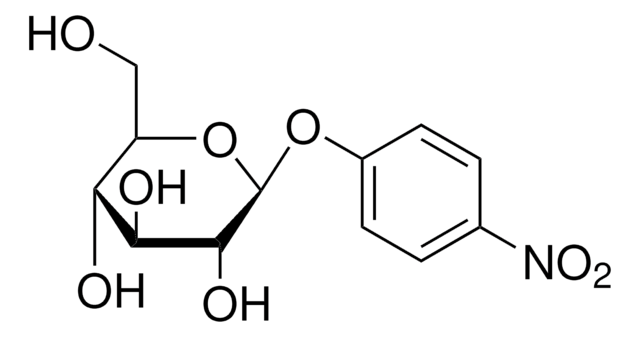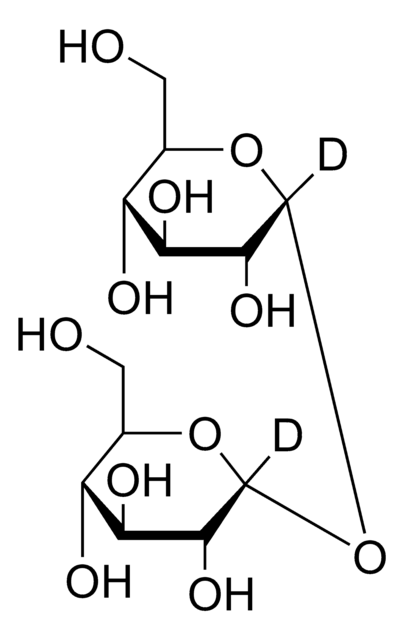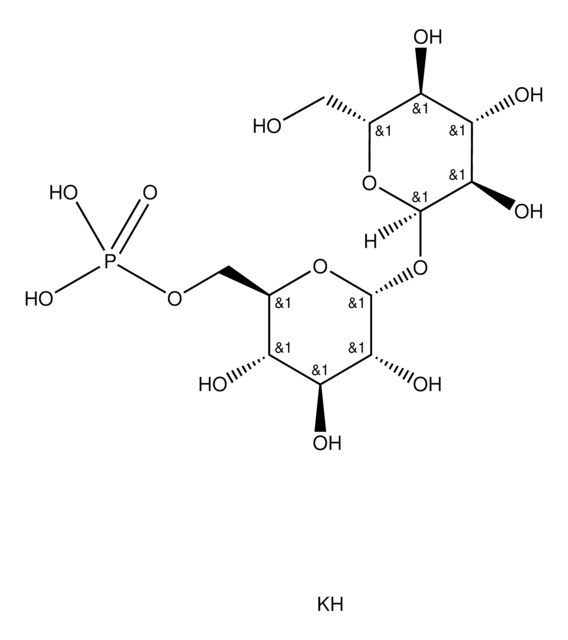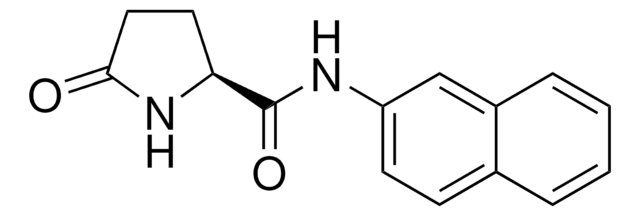T5251
D-(+)- Trealosa dihydrate
≥98.5% (HPLC), from Saccharomyces cerevisiae
Sinónimos:
α,α-Trealosa, α-D-Glucopiranosil-α-D-glucopiranósido
About This Item
Productos recomendados
origen biológico
Saccharomyces cerevisiae
Nivel de calidad
Análisis
≥98.5% (HPLC)
formulario
powder
actividad óptica
[α]/D 174 to 182 °, c = 1.0% (w/v) in water
técnicas
HPLC: suitable
cryopreservation: suitable
mp
97-99 °C
aplicaciones
agriculture
agriculture
cell analysis
genomic analysis
life science and biopharma
cadena SMILES
[H]O[H].[H]O[H].OC[C@H]1O[C@H](O[C@H]2O[C@H](CO)[C@@H](O)[C@H](O)[C@H]2O)[C@H](O)[C@@H](O)[C@@H]1O
InChI
1S/C12H22O11.2H2O/c13-1-3-5(15)7(17)9(19)11(21-3)23-12-10(20)8(18)6(16)4(2-14)22-12;;/h3-20H,1-2H2;2*1H2/t3-,4-,5-,6-,7+,8+,9-,10-,11-,12-;;/m1../s1
Clave InChI
DPVHGFAJLZWDOC-PVXXTIHASA-N
¿Está buscando productos similares? Visita Guía de comparación de productos
Descripción general
Aplicación
- Use as a cryoprotectant in a variety of cell freezing media
- Used in excipeint research
Acciones bioquímicas o fisiológicas
Características y beneficios
- Prepared from Saccharomyces cerevisiae
- Suitable for use with HPLC and GC-MS(4)
Nota de preparación
Otras notas
producto comparable
Código de clase de almacenamiento
11 - Combustible Solids
Clase de riesgo para el agua (WGK)
WGK 1
Punto de inflamabilidad (°F)
Not applicable
Punto de inflamabilidad (°C)
Not applicable
Equipo de protección personal
Eyeshields, Gloves, type N95 (US)
Certificados de análisis (COA)
Busque Certificados de análisis (COA) introduciendo el número de lote del producto. Los números de lote se encuentran en la etiqueta del producto después de las palabras «Lot» o «Batch»
¿Ya tiene este producto?
Encuentre la documentación para los productos que ha comprado recientemente en la Biblioteca de documentos.
Los clientes también vieron
Nuestro equipo de científicos tiene experiencia en todas las áreas de investigación: Ciencias de la vida, Ciencia de los materiales, Síntesis química, Cromatografía, Analítica y muchas otras.
Póngase en contacto con el Servicio técnico









